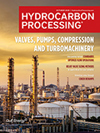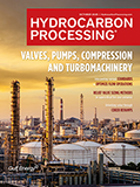Products
ABB wins automation contract for Cerilon’s first GTL plant
ABB will supply front-end design services, including automation and digital solutions for $2.8 billion gas-to-liquids facility.
Indonesia's biodiesel policy, dry weather to keep palm oil prices elevated
Indonesia's biodiesel policy and the likely emergence of the El Nino weather pattern could further strain global inventories of the most used cooking oil, lifting prices later this year, leading industry officials and analysts said.
bp CEO: Fuel efficiency has a bigger impact on demand vs. EVs
Fuel efficiency in new light vehicles is having a bigger impact on fuel demand than rising sales of electric vehicles, bp Chief Executive Bernard Looney said at CERAweek.
U.S. policy is conducive for new investments in energy transition said Repsol's CEO
The U.S, is attracting investment in renewables, hydrogen, biofuels, etc. through new legislation, while the EU's rules could deter investors, Repsol's CEO said at CERAweek.
AWS unveils startups selected for the Clean Energy Accelerator 3.0 program
Amazon Web Services (AWS) announced the startups selected for the Clean Energy Accelerator 3.0. The program is designed to facilitate collaborations with mature startups developing breakthrough clean energy technologies.
Lukoil has begun ship-to-ship loadings of ULSD
Russian oil producer Lukoil has started ship-to-ship (STS) loadings of ultra-low-sulfur diesel (ULSD) off its western exclave of Kaliningrad.
Chinese diesel/gasoline exports continue to rise
China's diesel exports rose for a second month in December, while gasoline exports climbed for a third month, as the country's COVID outbreak limited domestic fuel demand, and refiners utilized their expanded yearly export quotas.
Cepsa to invest more than $3.8 B in sustainable energy/mobility by 2027
Spanish oil and gas company Cepsa plans to nearly double its investments over the next three years to a total of 3.6 B euros ($3.82 B), with more than half of that amount going to sustainable energy and mobility.
Tunisia imported record number of Russian diesel/gasoil in February
Tunisia imported record volumes of Russian gasoil and diesel last month as an EU embargo forced Moscow to find new customers for its oil products.
Vietnam's Long Son petrochemicals complex to start operations by mid-year
Long Son Petrochemicals will start commercial production at its petrochemical complex in southern Vietnam by mid-2023.

- BGN announces strategic MoU with XCF Global to produce and supply SAF 11/17
- KazMunayGas and Uzbekneftegaz partner to build 50,000-tpy linear alkylbenzene plant 11/17
- Chevron joins race to explore potential purchase of Lukoil assets, including refineries 11/17
- Abra Group and Sumitomo sign MoU to advance affordable SAF in Brazil 11/17
- Sonatrach signs contract for unit with Sinopec subsidiary to boost gasoline production capacity 11/17
- Verso Energy awards FEED contract to Rely for the DEZiR eSAF project 11/17




